Acountry made up of more than 17,000 islands forming a 3,200-mile-wide archipelago, Indonesia is both massive and incredibly diverse. From the metropolis of Jakarta to the jungle of Borneo, Indonesia really has it all. Its geography and infrastructure can make it a somewhat challenging place to travel, though, so be sure you’re prepared for your trip. Double-check your packing list, and if you’re bringing devices like a phone or tablet, don’t forget a US to Indonesia power adapter as well.
US to Indonesia Power Adapter: What Plug Do I Need? (2025)
Which power outlets do they use in Indonesia?
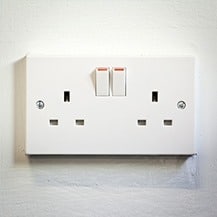
Indonesia power outlet
There are a couple of types of electrical outlets in Indonesia, and both will require a power adapter if you’re coming from the US. One outlet type in Indonesia is Type C (also called the Euro plug), which has two round holes and is ungrounded. Indonesia also has Type G sockets, which take three rectangular prongs as in the UK.
You may encounter either type of electrical outlet throughout the country, including in Jakarta, Bali, and elsewhere. In addition to using a different plug type than the US, Indonesia also has a different frequency and a different voltage. Like most other countries, Indonesia uses a voltage of 230V and a frequency of 50Hz.
What kind of power adapter do I need for Indonesia?
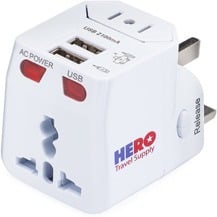
While you’re packing supplies for your trip, you’ll probably ask, “What plug do I need for Indonesia?” To use US purchased devices during your trip, you’ll need to bring a US to Indonesia power adapter. Because multiple types of sockets are found in Indonesia, it’s best to pack a universal adapter. This will allow you to plug your devices into either Type C or Type G outlets with no problem.
This Universal Adapter will have you covered for all the outlet types throughout Indonesia. It will reliably charge all of your personal electronics in Indonesia in addition to over 100 countries around the world.
What’s the electricity and power supply like in Indonesia?

Indonesia’s electrical infrastructure varies considerably and is generally less developed in the eastern half of the country, which is poorer and less densely populated. The lowest rates of electrification are found Papua, West Papua, and East Nusa Tenggara; while the vast majority of people have electricity, even in these provinces, there are still rural communities that do not. However, foreigners rarely visit these areas. In other parts of Indonesia, power outages are not uncommon, usually caused by poor maintenance or excessive strain on the system, as well as storms.
Do I Need A Voltage Converter in Indonesia?
Whether you’ll need a US to Indonesia voltage converter will depend on what type of devices you bring with you. Even though the US’s voltage is lower than Indonesia’s, most American devices are actually rated from 100V-240V, meaning they can be used anywhere without a problem. However, US-purchased hair dryers and curling irons are typically rated to only 110V-120V. If you’re bringing any of these appliances with you, you’ll need a voltage converter to use it safely. Plugging them into the wall in Indonesia with no converter could shock you or start a fire.
Other Indonesia Packing List Items
In addition to your US to Indonesia power adapter, these items will help you pack with intention and expand the possibilities of your getaway. Also, check out our Indonesia packing list for more inspiration and ideas.
-
1. Packing Cubes
Using packing cubes is probably the easiest way to stay more organized while you’re traveling. Instead of needing to unpack your entire bag to find the one item you’re looking for, you’ll just need to pull out the right packing cube. This is also useful if you’re staying in shared accommodations or traveling with a neat freak since it will prevent your bag from exploding every time you open it.
![aqua packing cubes]()
-
2. Lip-Stick Sized Charger
If you rely on your phone for a mapping app, it’s crucial to keep it charged while you’re out. You don’t want to end up wandering the streets of Jakarta or the countryside of Sumatra with no idea where you are. Fortunately, you can make sure that doesn’t happen by carrying a tiny charger with you, which will keep your phone’s battery juiced all day.
![Lipstick-Sized Charger]()
-
3. Virtual Private Network (VPN)
The Indonesian government blocks access to a few big sites, including Reddit and Tumblr, so you’ll need a VPN to visit them. Beyond censored websites, though, using a VPN will protect your privacy and keep your data safe, which is especially important when you’re traveling and logging onto unknown Wi-Fi connections.
![how a vpn works]()
-
4. Neck Wallet / Passport Pouch
-
5. Extra phone charging cables
To keep your phone charged while you travel, you’ll also need to bring your charging cable, of course. But these cords are notoriously easy to misplace (or leave plugged into the wall in your hotel room when you check out!), so bring along an extra just in case. You won’t even notice it in your luggage.
![Charger cables anker]()
-
6. Windproof Travel Umbrella
Indonesia’s tropical weather includes a lot of rain, especially during the months of November through March. We recommend bringing a quality, compact umbrella so you can still enjoy those rainy days you encounter. This umbrella comes with a nifty zippered carrying-case so your other items don’t get wet when stowing your wet umbrella.
![travel umbrella]()
-
7. Travel Insurance for Indonesia
In most cases, American health insurance doesn’t cover any treatment outside the US. That’s where travel insurance comes in, and it’s a must anytime you go abroad. If you get sick or injured in Indonesia, your travel insurance will pay for your medical expenses and even cover things like evacuation in the case of an emergency. We recommend TravelInsurance.com because their site makes it super easy to compare and buy plans from the top providers at affordable rates.
![Travel Insurance for Indonesia]()
Other FAQs about traveling in Indonesia
-
1. When to Travel to Indonesia?
If you can, plan to visit Indonesia during the drier months. Rainy season puts a damper on the outdoor activities the country is known for, including scuba diving, surfing, and trekking. Some trekking routes close entirely during the rainy season due to mudslides, and ferries often get canceled as well. Visit between April and October, and you’ll be able to experience more (with less hassle). Peak tourist season in most of the country runs from June to September when the more popular areas get busy. Be sure to check current Indonesia travel advisories before you go.
Outside of Bali and a few other tourist hotspots, however, much of Indonesia remains off the beaten path and won’t be terribly crowded even in high season.
-
2. What is the weather like in Indonesia?
All of Indonesia’s islands sit near the equator, and most of the country is low in elevation. As a result, it has a tropical climate that’s hot and humid year-round, and seasonal variation relates more to rainfall than temperature. Most of the country experiences a rainy season from November to March and a dry season from April to October. The mountainous areas can get surprisingly chilly, but you can expect temperatures in the 80s and 90s most everywhere else.
-
3. What to do in Jakarta?
Jakarta doesn’t make many travelers’ list of favorite places, but most visitors to Indonesia end up at least flying in or out of the capital. It’s well worth staying an extra day or two to see the city’s top sights. The national monument, called Monas, is Jakarta’s most iconic landmark, and its observation deck offers fantastic views over the city. Istiqlal Mosque is the most impressive of the city’s many mosques, and the Cathedral of Jakarta stands right across the road from it.
The capital is also home to several museums, including the National Museum, the Jakarta History Museum, and the Kite Museum of Indonesia.
-
4. Where to go in Indonesia?
Bali is an iconic tourist destination, from its cultural heart of Ubud to the coastal town of Uluwatu, but it’s hardly the only place to go in Indonesia. Lombok is often considered a less touristy alternative to Bali and offers top-notch surfing in Kuta and trekking at Mt. Rinjani. Another one of the country’s top attractions is Komodo National Park, where you can go on hiking and take boat trips to spot the Komodo dragons. On the island of Java, Yogyakarta is known for its history and culture, especially the nearby temples of Borobudur and Prambanan. Finally, Raja Ampat is quickly becoming one of the country’s hot new destinations, thanks in large part to its pristine diving conditions.
-
5. How to Get Around in Indonesia?
Because it’s so spread out and comprised of so many different islands (and because infrastructure is not great on many of them), getting around Indonesia can be a challenge. Flying is the most feasible option for traveling longer distances, and many domestic airlines operate in Indonesia, AirAsia and Garuda Indonesia generally considered the most reliable. To go shorter distances, like between neighboring islands, ferries are usually available.
The options for getting around on a particular island vary throughout the country. Bali is notorious for its lack of public transportation, and most visitors hire a private driver to travel around the island. Local shared taxis called bemos do operate in Bali and elsewhere, but they’re notoriously difficult for foreigners to use. Many other islands also have long-distance buses, although their efficiency and comfort level varies.
Jakarta has an extensive public bus system, and recently opened its first subway line. Taxis, motorcycle taxis, ride-sharing apps like Grab and Go-Jek, a taxi-hailing app called Blue Bird, and bajaj (akin to tuk-tuks or rickshaws) are also widely available there and in most major towns.







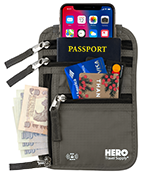

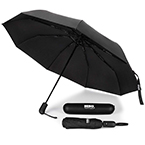

 If you can, plan to visit Indonesia during the drier months. Rainy season puts a damper on the outdoor activities the country is known for, including scuba diving, surfing, and trekking. Some trekking routes close entirely during the rainy season due to mudslides, and ferries often get canceled as well. Visit between April and October, and you’ll be able to experience more (with less hassle). Peak tourist season in most of the country runs from June to September when the more popular areas get busy. Be sure to check current
If you can, plan to visit Indonesia during the drier months. Rainy season puts a damper on the outdoor activities the country is known for, including scuba diving, surfing, and trekking. Some trekking routes close entirely during the rainy season due to mudslides, and ferries often get canceled as well. Visit between April and October, and you’ll be able to experience more (with less hassle). Peak tourist season in most of the country runs from June to September when the more popular areas get busy. Be sure to check current  Jakarta doesn’t make many travelers’ list of favorite places, but most visitors to Indonesia end up at least flying in or out of the capital. It’s well worth staying an extra day or two to see the city’s top sights. The national monument, called Monas, is Jakarta’s most iconic landmark, and its observation deck offers fantastic views over the city. Istiqlal Mosque is the most impressive of the city’s many mosques, and the Cathedral of Jakarta stands right across the road from it.
Jakarta doesn’t make many travelers’ list of favorite places, but most visitors to Indonesia end up at least flying in or out of the capital. It’s well worth staying an extra day or two to see the city’s top sights. The national monument, called Monas, is Jakarta’s most iconic landmark, and its observation deck offers fantastic views over the city. Istiqlal Mosque is the most impressive of the city’s many mosques, and the Cathedral of Jakarta stands right across the road from it.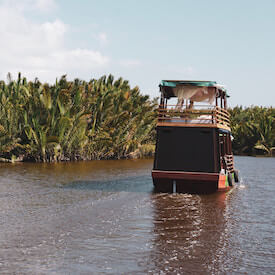 Because it’s so spread out and comprised of so many different islands (and because infrastructure is not great on many of them), getting around Indonesia can be a challenge. Flying is the most feasible option for traveling longer distances, and many domestic airlines operate in Indonesia, AirAsia and Garuda Indonesia generally considered the most reliable. To go shorter distances, like between neighboring islands, ferries are usually available.
Because it’s so spread out and comprised of so many different islands (and because infrastructure is not great on many of them), getting around Indonesia can be a challenge. Flying is the most feasible option for traveling longer distances, and many domestic airlines operate in Indonesia, AirAsia and Garuda Indonesia generally considered the most reliable. To go shorter distances, like between neighboring islands, ferries are usually available.